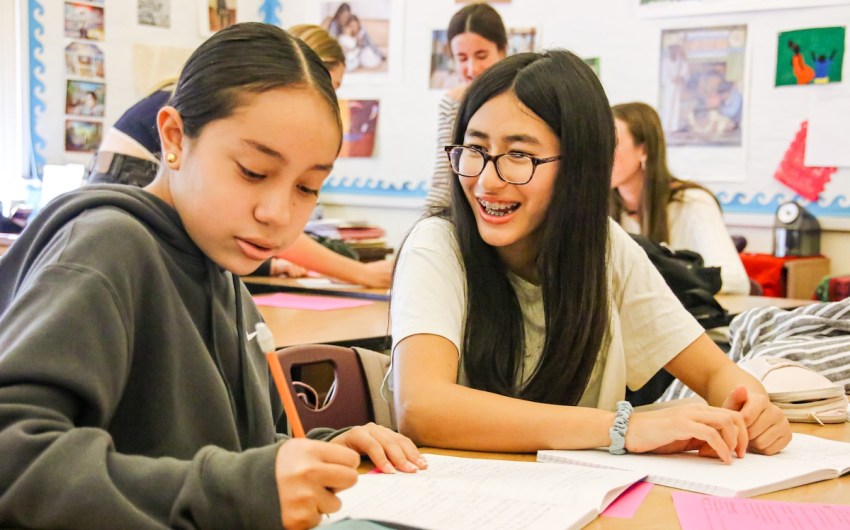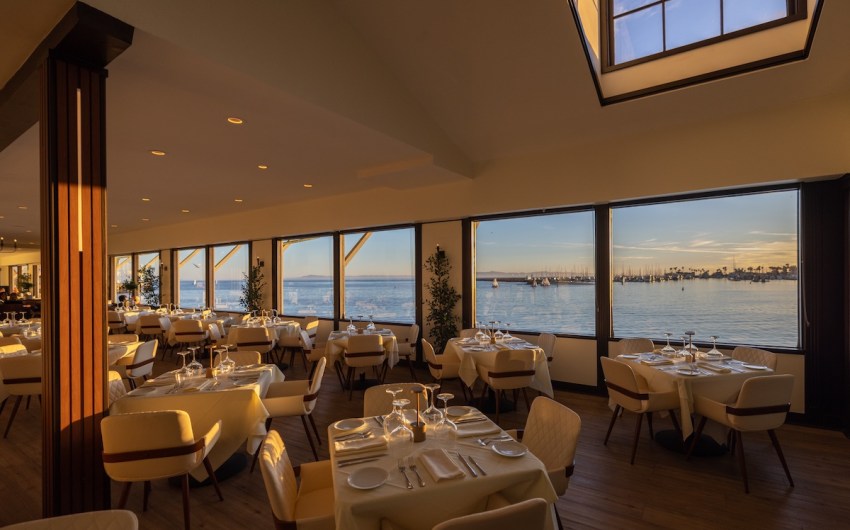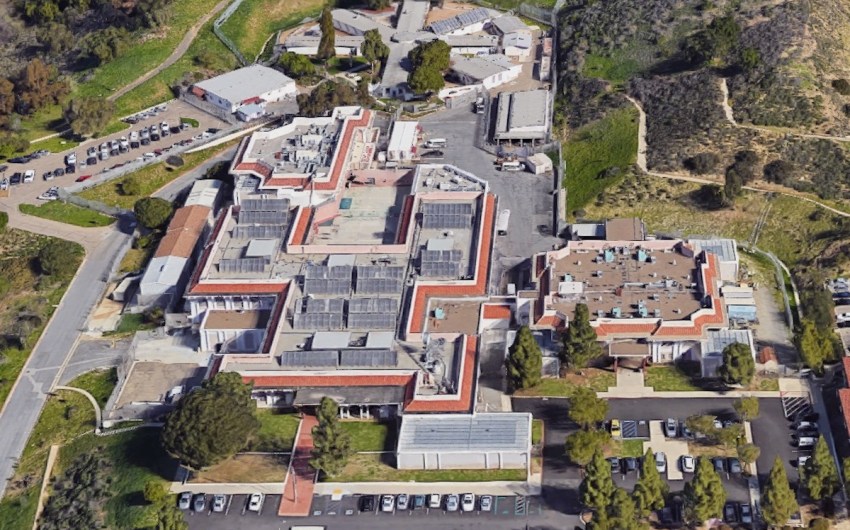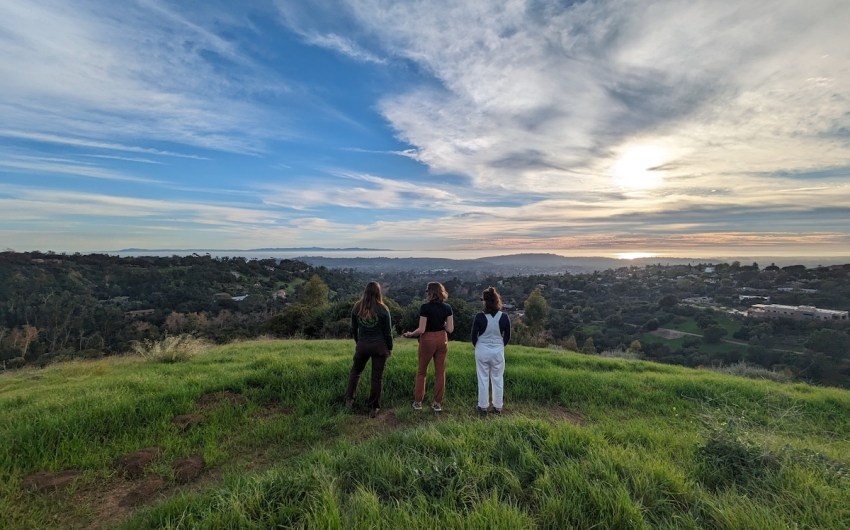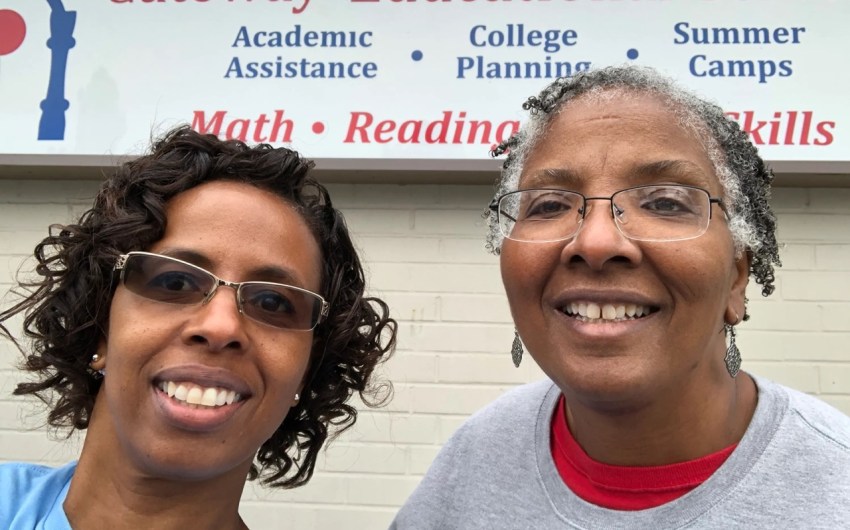High School Students Get a Jump Start Through UC Santa Barbara Summer Research Programs
Participants Engage in Interdisciplinary Learning and Research, Present Their Findings at UCSB Research Conferences
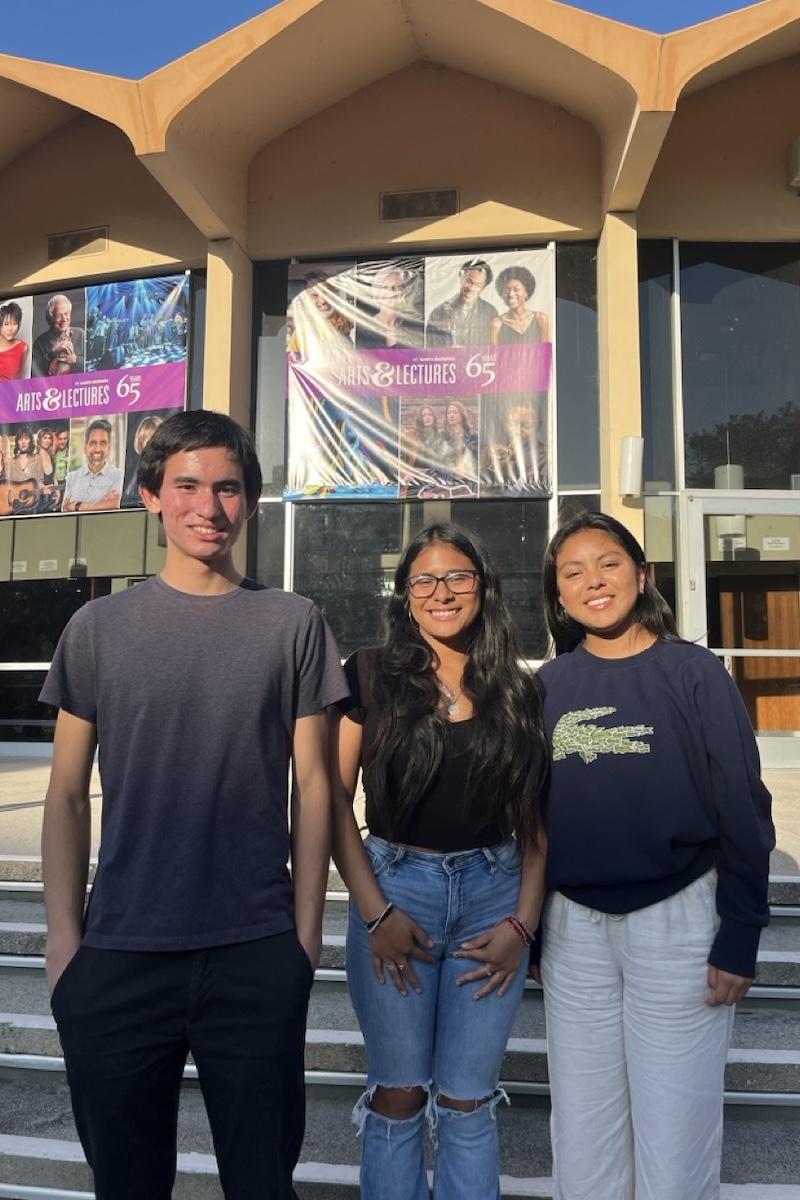
Summer is the ideal time to get a head start on personal projects and hobbies, and for the high school students attending UCSB’s pre-college research programs, it’s the perfect time to dive into university-level research while enjoying the beautiful beachside campus.
The Research Mentorship Program (RMP) and Summer Research Academies (SRA) are six-week and four-week (respectively) long programs run by the Office of Summer Sessions. Students choose to stay in the Santa Cruz Residence Hall or commute, but the program offers various academic and social activities for everyone.
In RMP, students work almost one-on-one with a mentor to develop a research question, conduct interdisciplinary research, and create a paper, poster, and presentation they deliver at the end of the program.
SRA mimics undergraduate upper-division courses, where students are admitted into a track (class) to learn and conduct group research under the instruction of a researcher in that field. Both programs engage students in fields across STEM, humanities, social sciences, and more. The research that students conduct contributes to ongoing work that mentors and instructors are also exploring. Both programs are highly selective and admit students from all over the world, but with each new cohort is a fresh new batch of researchers who are eager to dive into hands-on learning.
Ryan Davis is a returning RMP student whose second year in the program has been met with another round of intensive research but still balanced with fun. A rising senior attending Dos Pueblos High School, Davis discussed his enthusiasm in applying for RMP for a second year with his hopes to explore a different research field.
Last year, Davis’s research was in a wet lab, though he cut it close with results coming in just before his presentation. That experience alongside his growing interest in other areas prompted him to look for something different this year: bioinformatics in earth science, looking at the distribution and prevalence of genes that encode for oil-degrading enzymes in various microorganisms.
“My research is more self-paced, being computationally based. But this opens it up to other obstacles, and it still takes time to make progress,” Davis said. Due to the nature of RMP being six weeks, it’s crucial for students to take initiative and work independently to gather, analyze, and organize their research findings. Under guidance from Office of Summer Sessions Academic Director Lina Kim, the cohort spends time working on crafting their final projects in lecture and Teaching Assistant–led discussion sections.
As a returning student, Davis took the chance to help others familiarize themselves with the program and campus. He also knew it meant knowing how to take a more individualized responsibility in the research process while working with his mentor. “[It’s] the opportunity to step up and conduct a research project that would not proceed without substantial individual effort,” he said.
Both RMP and SRA reach out to partnership organizations to recruit high achieving students that might not have heard about the programs. One such program is the nonprofit Mission Scholars, which brought rising 12th-grade students Sofia Ramirez from Laguna Blanca High School and Isabel Ramirez Lucas from San Marcos High School.
Ramirez’s track focused on religion and secularism in American politics, which aligned with her interests in law and political journalism. Her group investigated how Florida policymakers pass highly conservative laws that may not reflect Florida’s diverse political atmosphere. Though it was a lot of reading, studying, and researching to complete in four weeks, Ramirez noted the ample support received from her instructing team.
“I was drawn to the program because of the high-intensity research opportunity that the program granted students,” Ramirez said. The Mission Scholars scholarship allowed Ramirez to be fully invested in all aspects of the program and dive into research she is passionate about.
Outside of academics, she found herself regularly spending time with her peers on campus and in Isla Vista. “SRA gives students a small sample of what college life will be like from the rigor of the classes to the independence,” she said. “I was able to form close knit relationships with my peers that I will cherish as I depart from the program.” Davis and Ramirez Lucas expressed similar feelings, recounting moments in the library and the shared dining hall, sharing stories about their different experiences beyond their research at UCSB.
Meanwhile, Ramirez Lucas was investigating the Ced-3 gene in the nematode C. elegans. Her group focused on finding a connection between the apoptosis (cell death) processes in C. elegans with neuronal apoptosis in humans.
Discovering SRA through Mission Scholars was the perfect opportunity for Ramirez Lucas. “I constantly seek opportunities that will not only provide me with fun but also provide me answers to questions I need to ask,” she said. Her genuine curiosity toward genetics pushed her to apply for SRA and her chosen track.
Though brief, her journey wasn’t challenge-free, and she admitted to some feelings of imposter syndrome throughout the program. Due to SRA’s intensive nature, students are expected to keep up with a large amount of readings and be fully present and engaged with the new material that is introduced in nearly daily lectures.
To overcome this, she said, “I always reminded myself that I got into the program for the potential my professor and the SRA team saw in me.” Her determination, alongside that of all the other students in the programs is reflected in their final projects and presentations.
Though their research may sound far deep into the world of academia, the students present their process and findings at the RMP Research Symposium and SRA Capstone Seminar. The students work to present their findings to a large audience of both peers, families, and strangers alike.
For all of the students, RMP and SRA meant diving into a new environment that pushes students in their overall growth as students pursue higher education. “Take the opportunities given to you,” Ramirez Lucas said. “And fight for even more.”
For more information about the UCSB Research Mentorship Program, click here, and for more information about the UCSB Summer Research Academies, click here.
Premier Events
Thu, Nov 28
12:00 PM
Santa Barbara
Thanksgiving Dinner at The Harbor Restaurant
Fri, Nov 22
11:00 AM
Santa Barbara
Santa Barbara Antique & Vintage Show & Sale
Fri, Nov 22
6:00 PM
Santa Barbara
Introduction to Crochet Workshop
Fri, Nov 22
7:30 PM
Carpinteria
Rod Stewart VS. Rolling Stones Tribute Show
Fri, Nov 22
9:00 PM
Santa Barbara
Numbskull Presents: Jakob’s Castle
Sat, Nov 23
11:00 AM
Santa Barbara
Santa Barbara Antique & Vintage Show & Sale
Sat, Nov 23
12:00 PM
Santa Barbara
Fall 2024 Healing Arts Faire
Sat, Nov 23
7:30 PM
Santa Barbara
SBCC Theatre Arts Department presents “Mrs. Bob Cratchit’s Wild Christmas Binge”
Sun, Nov 24
11:00 AM
Santa Barbara
Santa Barbara Antique & Vintage Show & Sale
Sun, Nov 24
6:00 PM
Santa Barbara
¡Viva el Arte de Santa Bárbara! Mariachi Garibaldi de Jaime Cuellar
Sun, Dec 01
5:00 PM
Santa Barbara
Paseo Nuevo Tree Lighting Ceremony
Thu, Nov 28 12:00 PM
Santa Barbara
Thanksgiving Dinner at The Harbor Restaurant
Fri, Nov 22 11:00 AM
Santa Barbara
Santa Barbara Antique & Vintage Show & Sale
Fri, Nov 22 6:00 PM
Santa Barbara
Introduction to Crochet Workshop
Fri, Nov 22 7:30 PM
Carpinteria
Rod Stewart VS. Rolling Stones Tribute Show
Fri, Nov 22 9:00 PM
Santa Barbara
Numbskull Presents: Jakob’s Castle
Sat, Nov 23 11:00 AM
Santa Barbara
Santa Barbara Antique & Vintage Show & Sale
Sat, Nov 23 12:00 PM
Santa Barbara
Fall 2024 Healing Arts Faire
Sat, Nov 23 7:30 PM
Santa Barbara
SBCC Theatre Arts Department presents “Mrs. Bob Cratchit’s Wild Christmas Binge”
Sun, Nov 24 11:00 AM
Santa Barbara
Santa Barbara Antique & Vintage Show & Sale
Sun, Nov 24 6:00 PM
Santa Barbara
¡Viva el Arte de Santa Bárbara! Mariachi Garibaldi de Jaime Cuellar
Sun, Dec 01 5:00 PM
Santa Barbara



